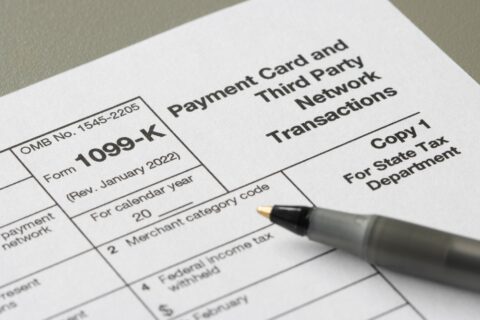I remember when Individual Retirement Accounts (“IRAs”) were first established in 1974. (Yep, I’m no spring chicken.) At first, these tax-deferred IRAs were restricted to those workers who were not already covered by a qualified employment-based retirement plan. In 1981, that restriction was removed. IRAs became big business. Then Roth IRAs came along in 1997. The Investment Company Institute reported that at yearend 2015, people had IRAs worth $7.3 trillion.
Many people assume that any income inside an IRA is nontaxable. Quite a few IRA holders don’t think much about what kind of investment they place in their IRAs.
I could write a book about all the problems you can have, if you are not careful with your IRAs. I won’t do that; I wrote a book in my last blog. Let me touch on just a few of the key problems into which one can run.
Excepting general prohibitions on investing retirement funds in life insurance or collectibles, you can invest your IRA funds in a broad spectrum of assets. Most of the investments in IRAs are publicly-traded stocks, marketable bonds, mutual funds and ETFs. For the most part, income and gains from those kinds of investments are not taxed currently to either the IRA or the IRA holder. However, beyond a threshold of $1,000 per year per IRA, IRAs may have to pay tax on income and gains from some kinds of “unconventional” investments, such as hedge funds, private equity funds, publicly traded partnerships, real estate, and closely-held businesses operated as partnerships or limited liability companies treated as partnerships for tax purposes. This tax is levied on “unrelated business taxable income” (“UBTI”). The tax is levied also on “unrelated debt-financed income” (“UDFI”) of the IRA. The IRA must file a Form 990-T and pay tax at rates that quickly reach top individual rates.
Recently, The Wall Street Journal reported that Ms. Fanny Handel, a retiree from Queens, was shocked and dismayed to get a notice from the IRS in 2015 that her IRA owed $92,000 in taxes, penalties and interests. Her IRA had invested in Kinder Morgan, an energy publicly traded partnership. Upon a taxable merger, Kinder Morgan generated a lot of income and gain for its limited partners. Ms. Fanny or her IRA paid the tax, but got a bit of break from the IRS on the penalties and interest.
So, one’s IRA can owe tax, if one has UBTI or UDFI in one’s IRA. Your problems don’t stop there. You can’t engage in prohibited transactions (a) with disqualified persons or (b) involving self-dealing. Just a few examples of prohibited transactions in an IRA include: (1) having your IRA purchase for you a vacation home; (2) selling your own assets to the IRA; (3) taking a salary from an IRA-funded business; and (4) personally working on and/or paying for repairs on a rental property that your IRA owns. If you do engage in a prohibited transaction, what happens? The entire IRA loses its tax-favored status as an IRA, and the account is treated as distributing all of its assets to the IRA owner at the fair market value on the first day of the year in which the transaction occurred. If it’s a traditional IRA, you may have a huge tax bill. If you are less than 59 ½ years old when this happens, you’ll also owe a 10% early distribution penalty.
Let’s throw in one more complexity – valuing unconventional assets. This is can be a particularly vexing problem when you reach 70 ½ years of age, the age at which you must begin taking required minimum distributions (“RMDs”) from traditional IRAs. Generally, you calculate the RMD by applying a percentage to the value of your IRA accounts at the beginning of the year of the RMD. What if you underestimate the value of the unconventional assets (for example, stock in a private company) in your IRA accounts and, thus, don’t distribute enough to satisfy your RMD? You pay an excise tax equal to 50% of the amount that the RMD exceeds what you paid.
Now, wait a minute, you might say. Does not the IRA custodian have to keep up with all the particulars of your IRA investments, including valuing your unconventional assets? Usually, no. Does not the IRA custodian prepare the IRA Form 990-T for and pay the tax from your IRA? It depends; often not. When your IRA invests in unconventional assets, you should assume that you are assuming a lot of responsibilities.
The Government Accountability Office released a report in December 2016 and suggested that the IRS give a lot more guidance to and, basically, post big warning signs for IRA holders who are invested in, or are thinking of investing in, unconventional assets. Good idea.
So, placing unconventional assets in an IRA can cause problems. On the other hand, placing unconventional assets can create significant wealth. I’ll discuss a very creative example of this wealth-building in my next blog, Alternative Investments in IRAs – Part II: Be Creative.
VKM
Latest News
On June 9, the IRS released Announcement 2022-13, which modifies Notice 2022-3, by revising the optional standard mileage ...
At the tail end of 2021, the Internal Revenue Service (IRS) released new Schedules K-2 and K-3 effective ...
This information is current as of Sunday, November 21, 2021. On Friday, November 19, 2021, after the Congressional ...
HM&M Updates
Last month, Senior Manager, Pearl Balsara was invited to speak at the 2023 FPA DFW Annual Conference in ...
We are pleased to announce the winners of the 2022 HM&M Excellence Awards. Ronna Beemer, Keith Phillips, and ...
Huselton, Morgan and Maultsby is composed of a spectacular team of individuals. During our annual What’s Happening Meeting, ...









